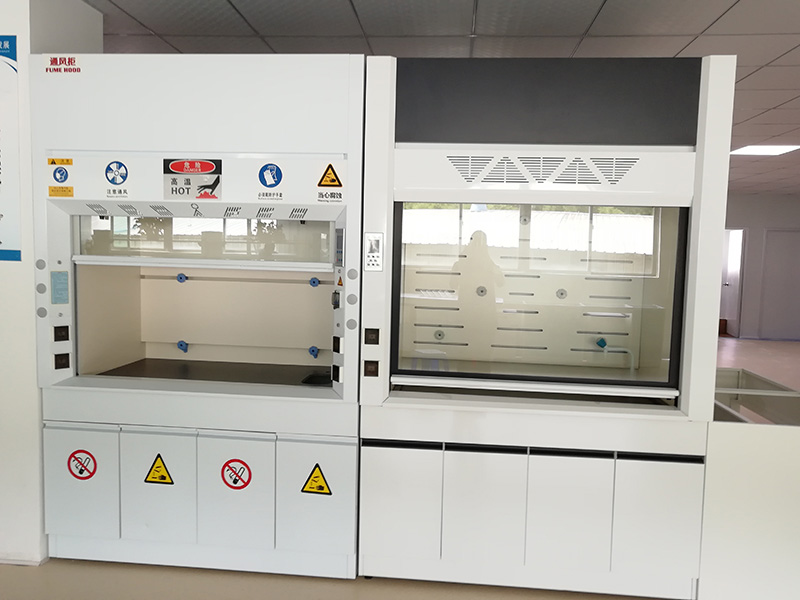What Is A Lab Fume Hood Sash?
A lab fume hood sash is a crucial component in laboratory safety, serving as the barrier between the lab worker and hazardous fumes or chemicals. The sash is the movable front panel of a fume hood, typically made of glass, which can be adjusted vertically or horizontally to control airflow and access to the interior of the hood. Its primary function is to protect the user by containing and exhausting harmful vapors, ensuring a safe working environment.
Table of Contents
Fume Hood Sash Movement Mechanism
Vertical Sash: This sash moves up and down along side tracks. It is counterbalanced with weights or springs to make lifting and lowering easier and to keep the sash in place at the desired height.
Horizontal Sash: These sashes slide sideways along a track. They can consist of multiple panels that overlap to allow various opening configurations.
Combination Sash: This type can move both vertically and horizontally, offering maximum flexibility.
Types of Fume Hood Sash
Vertical Sash:
This is the most common type of sash found in many laboratories. It moves up and down like a window, allowing easy access and providing a clear view of the interior.
Ideal for tasks that require frequent adjustments to the working height.
Horizontal Sash:
This type slides sideways, which can be particularly useful in wide fume hoods.
It allows for easy access from multiple angles and can be more ergonomic for certain workflows.
Combination Sash:
Combining the features of both vertical and horizontal sashes, this type offers maximum flexibility.
It can be lifted vertically or slid horizontally, providing optimal versatility for various lab tasks.
Split Sash:
These are essentially multiple smaller sashes that move independently of each other.
They provide better control over the airflow and can enhance energy efficiency by reducing the open face area.
How To Choose The Fume Hood Sash?
Selecting the right fume hood sash involves considering several factors to ensure it meets the specific needs of your laboratory:
Lab Requirements:
Assess the type of work being conducted. For example, if you need frequent access to different parts of the hood, a combination or split sash might be the best option.
User Safety:
Ensure the sash type provides adequate protection for the tasks performed. Vertical sashes are generally preferred for their ability to create a barrier between the user and the experiment.
Energy Efficiency:
Consider how the sash design impacts energy consumption. Split and combination sashes can reduce the volume of conditioned air exhausted, leading to significant energy savings.
Ergonomics:
The sash should be easy to operate and should not strain the user. Horizontal sashes can be more comfortable for repetitive tasks, while vertical sashes might be better for varied work heights.
How Height The Fume Hood Sash Should Be Lifted While In Operation?
The height to which the fume hood sash should be lifted during operation is critical for both safety and efficiency:
Optimal Height:
Generally, the sash should be positioned at the lowest height possible that still allows comfortable access to the work area. A common guideline is to keep it at 18 inches or lower. This height maximizes containment of hazardous fumes while minimizing exposure.
Manufacturer Guidelines:
Always follow the specific guidelines provided by the fume hood manufacturer. These recommendations are based on the design and intended use of the hood.
User Comfort:
The sash height should be comfortable for the user to work behind without compromising safety. Users should be able to perform their tasks without having to excessively reach or bend.
Airflow Considerations:
Proper sash height ensures optimal airflow patterns, which are essential for effective fume extraction. Too high a sash height can disrupt airflow and reduce the hood’s efficiency in capturing contaminants.
By understanding the different types of fume hood sashes and their applications, as well as adhering to best practices for their use, lab personnel can ensure a safer and more efficient working environment. Regular training and adherence to safety protocols are essential in maintaining the protective benefits of lab fume hoods.
This article is designed to provide up-to-date and comprehensive information about lab fume hood sashes, tailored to meet the needs of professionals seeking to enhance their knowledge and ensure best practices in their laboratories.




